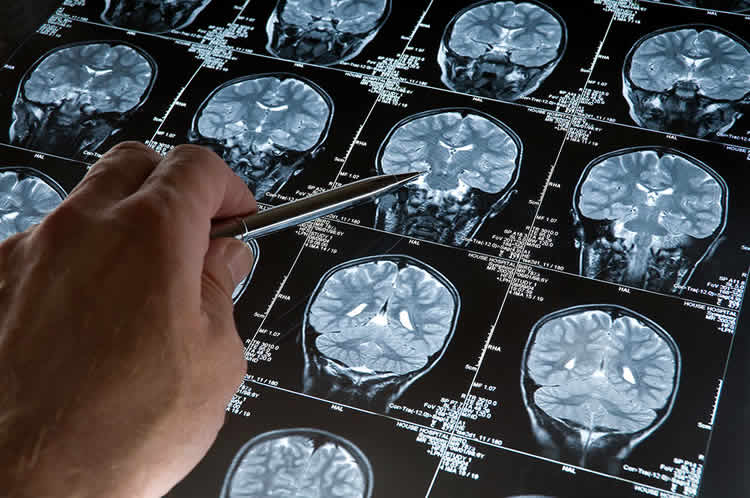Summary: A new study confirms those on the autism spectrum are hypersensitive to pain. The new study from UT Dallas researchers also demonstrated people with ASD showed greater neural responses in the anterior cingulate cortex than those not on the spectrum when anticipating a painful stimuli.
Source: UT Dallas.
New research by a UT Dallas neuroscientist has established a link between autism spectrum disorder (ASD) and pain sensitivity.
The study, led by Dr. Xiaosi Gu, outlines alternations in pain perception faced by people on the autism spectrum and how those changes can affect them in social functions.
“This provides some of the first evidence that links pain perception to social function in ASD. Most experiments on ASD focus either on the social dysfunction aspects or the sensory dysfunction aspects. But very few studies have looked at them both,” said Gu, assistant professor in the School of Behavioral and Brain Sciences.
Published in the European Journal of Neuroscience, the study focused on a very specific aspect of sensory processing — pain perception, with a goal of determining what happens in the brains of high-functioning adults with ASD when they anticipate and feel pain sensations.
The researchers used a stimulation device to deliver mild electrical shocks to the participants, who decided how much pain they were willing to tolerate. The shocks were delivered while the subjects were inside an MRI scanner, so that researchers could measure brain activity and physiological responses when participants anticipated pain and when they experienced it.
One of the areas in the brain known to encode anticipation of pain is the anterior cingulate cortex (ACC). As participants waited in the scanner before receiving a pain signal, researchers could see this part of the brain light up.
Gu said there were three main findings from the study:
- It confirmed that people with ASD are hypersensitive to pain, a finding that has been documented in previous studies.
- In a new finding, the study showed that when people with ASD anticipate painful stimulus, their brains generate greater neural responses in the ACC, compared to those without ASD.
- In addition, the research indicated that the more brain activity the participants show during pain anticipation, the less they score on an empathy quotient questionnaire. Gu said people with autism often are poor at empathy, which is the ability to understand what another person may be feeling. This result indicates that pain anticipation is related to social impairments faced by those with autism.
She said that a withdrawal from interactions may be a way of protecting oneself.

“The risks of encountering pain are part of daily life and are normal for non-ASD individuals, but may be overwhelming for autistic people,” Gu said. “Therefore, one possible explanation of our finding is that to protect themselves, individuals with ASD may not engage in social interactions as much. You reduce the risk of encountering pain or other sensory experiences that are very normal for non-ASD individuals, but not for those with ASD.”
Based on the study results, Gu said that therapists and experts who work with people with ASD should consider developing interventions and treatment options to help with sensory processing, particularly pain.
Other authors of the paper include researchers from City University of New York, Boston University, the University of Toronto, the Icahn School of Medicine in New York and Rush University in Chicago.
Funding: The research was funded by the National Institutes of Health.
Source: Phil Roth – UT Dallas
Image Source: NeuroscienceNews.com image is adapted from the UT Dallas news release.
Original Research: Abstract for “Heightened brain response to pain anticipation in high-functioning adults with autism spectrum disorder” by Xiaosi Gu, Thomas J. Zhou, Evdokia Anagnostou, Latha Soorya, Alexander Kolevzon, Patrick R. Hof, and Jin Fan in European Journal of Neuroscience. Published online May 25 doi:10.1111/ejn.13598
[cbtabs][cbtab title=”MLA”]UT Dallas “Link Between Autism and Pain Sensitivity.” NeuroscienceNews. NeuroscienceNews, 24 July 2017.
<https://neurosciencenews.com/autism-pain-sensitivity-7164/>.[/cbtab][cbtab title=”APA”]UT Dallas (2017, July 24). Link Between Autism and Pain Sensitivity. NeuroscienceNew. Retrieved July 24, 2017 from https://neurosciencenews.com/autism-pain-sensitivity-7164/[/cbtab][cbtab title=”Chicago”]UT Dallas “Link Between Autism and Pain Sensitivity.” https://neurosciencenews.com/autism-pain-sensitivity-7164/ (accessed July 24, 2017).[/cbtab][/cbtabs]
Abstract
Heightened brain response to pain anticipation in high-functioning adults with autism spectrum disorder
Autism spectrum disorder (ASD) is marked by both socio-communicative difficulties and abnormalities in sensory processing. Much of the work on sensory deficits in ASD has focused on tactile sensations and the perceptual aspects of somatosensation, such as encoding of stimulus intensity and location. Although aberrant pain processing has often been noted in clinical observations of patients with ASD, it remains largely uninvestigated. Importantly, the neural mechanism underlying higher order cognitive aspects of pain processing such as pain anticipation also remains unknown. Here we examined both pain perception and anticipation in high-functioning adults with ASD and matched healthy controls (HC) using an anticipatory pain paradigm in combination with functional magnetic resonance imaging (fMRI) and concurrent skin conductance response (SCR) recording. Participants were asked to choose a level of electrical stimulation that would feel moderately painful to them. Compared to HC group, ASD group chose a lower level of stimulation prior to fMRI. However, ASD participants showed greater activation in both rostral and dorsal anterior cingulate cortex during the anticipation of stimulation, but not during stimulation delivery. There was no significant group difference in insular activation during either pain anticipation or perception. However, activity in the left anterior insula correlated with SCR during pain anticipation. Taken together, these results suggest that ASD is marked with aberrantly higher level of sensitivity to upcoming aversive stimuli, which may reflect abnormal attentional orientation to nociceptive signals and a failure in interoceptive inference.
“Heightened brain response to pain anticipation in high-functioning adults with autism spectrum disorder” by Xiaosi Gu, Thomas J. Zhou, Evdokia Anagnostou, Latha Soorya, Alexander Kolevzon, Patrick R. Hof, and Jin Fan in European Journal of Neuroscience. Published online May 25 doi:10.1111/ejn.13598






